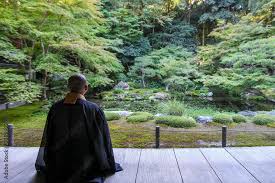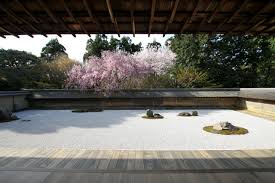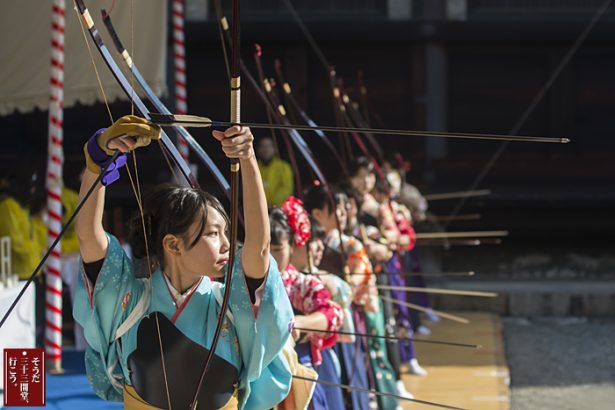禅と日本人の精神 Zen and Japanese sprit
禅の原理 Principal in Zen

Although Zen is derived from Buddhism, it is a religion that transcends denominations and emphasizes naturalness and spontaneity. We emphasize the practice of fully mastering the original state of nature.
There are four principles in Zen. (1) Not relying on words and letters, (2) Conveying the truth beyond scriptures, and (3) Appealing to the human soul (4) Achieving insight into one`s nature and attending enlightenment.
禅は仏教から派生したものですが、宗派を超えた宗教で、自然性と自発性を重視し 自然本来の姿を完全に体得する修行を重視します。禅には4つの原則があります。①言葉・文字に頼らないこと②経典を超えた真実を伝えること③人間の魂に訴えかけること ④本質を見極め悟りを開くこと
以心伝心 Telepathic Communication

From the spirit of Zen was born telepathic communication, ma, and way. This spirit is manifested in various arts such as Noh play, haiku poetry, pottery, flower arrangement, tea ceremony, Japanese calligraphy, Indian ink painting, martial arts, etc. painting is the art of intuition, in which the painter becomes one with the subject and the subject paints through the brush. Noh play is said to see one’s dance through the eyes and heart of the audience. In haiku poetry, the reader must read the author’s mind in 17 characters.
禅の精神から日本人の以心伝心、間、道の精神が生まれました その精神は、能、俳句、陶芸、華道、茶道、書道、墨絵、武道など様々な芸術において現れています 禅の絵画は直覚の芸術で、画家が対象と一体となり、対象が筆を通して描く境地です。 能は、観客の目と心を通して己の舞姿を見ると言われてます。 俳句は、読者が17文字の中に、作者の心を読み取らなければなりません。
間 Ma Space

The rock garden of Ryoanji Temple, in which only stones and sand are arranged asymmetrically, is a prime example of Japan giving meaning to space. It is a space between the whole and the part that blends together and is the core of all Japan person’s spatial experience. It is said that as you patiently look at the dry landscape garden, the space begins to come alive. Zen monks regard this garden as landscape, poetry, art and philosophy. Space, not something to be analyzed, but something to be experienced, an attempt to deepen harmony with nature.
石と砂だけを非対称に配置した龍安寺の石庭は、日本人が間に意味を与える代表例です。 全体と部分が渾然一体となる間であり、日本人の全ての空間体験の核となっています。 枯山水庭園を忍耐強く眺めているうちに間が生き生きし始めると言われています。 禅僧はこの庭を、風景、詩、芸術、哲学とみなします。 間とは分析するものではなく、体験すべきものであって、自然との調和を深めようとするものです。
道 Michi Way

The spirit of the way is manifested in the practice of both literary and martial arts such as flower arrangement, tea ceremony, judo, and archery. It is not just the acquisition of skills, but a way of life that controls all aspects of a person’s spiritual life. kyudo, it is important to draw the bow in the spirit of releasing force and unintentionally shooting arrows. The idea of the way is at the center of all art, and the thought of Zen is the bond that connects the art and the way. The way is the concept of a circle with a beginning without a beginning and an end without an end.
道の精神は華道、茶道、柔道、弓道など文武両道のたしなみに現れて、 単なる技術の習得ではなく、人の精神生活の全てを支配する生き方です。 弓道では、力を抜いて意図せずに矢を放つという精神で弓を引くことが重要です。 道の思想があらゆる芸術の中心で、禅の思想が芸と道を結ぶ絆となっています。 道とは、始まりのない始めと終わりのない終わりという円の概念です。
関連する投稿
- Concentrating on here and now 今、ここに集中しましょう
- You are the Greatest 唯我独尊
- Zen & Mind of Buddha 禅と仏心
- 自力本願の宗教、禅 Zen Self-motivated Religion
- 禅とは何か? What is Zen?
現在の記事: 禅と日本人の精神 Zen and Japanese sprit






